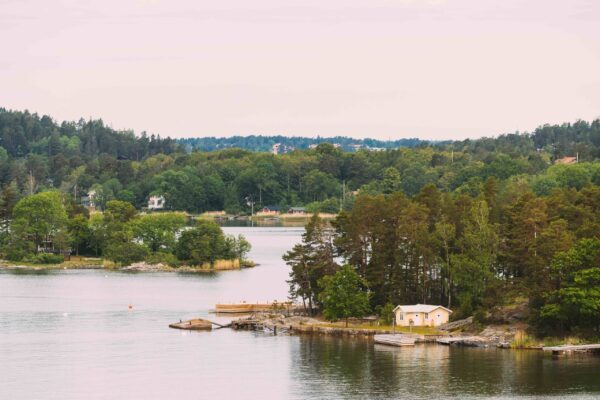
You don’t just arrive in Dalarna — you settle into it. Somewhere past Stockholm, the scenery changes. Apartment blocks fall away, replaced by long stretches of pine and the occasional red cottage tucked into the trees. The air turns cooler. Not colder — just clearer, more open. You look out the window and realize you’ve stopped checking your phone.
Mora meets you without ceremony. There’s Lake Siljan, quiet and unbothered, reflecting soft clouds. A few cyclists pass by. The town doesn’t try to charm you, but it does anyway. Maybe it’s the rhythm — slower, more deliberate. People move like they’ve already arrived.
Farther out, in Nusnäs, wood shavings pile beneath benches where hands shape Dala horses. You can smell the lacquer before you step through the door. Inside, someone offers you a brush. “Try,” they say — and you do. Not to make it perfect, just to take part. That’s kind of how it is here.
Rättvik rests by the shore of Lake Siljan like it has no reason to be anywhere else. The long wooden pier stretches into the water with quiet intention — more path than landmark. Locals fish, children pass by with pockets full of stones, and now and then, a tune from a fiddle drifts through the air like it belongs there.
A little farther inland, in Tällberg, the land rolls gently, folding into clusters of red cottages and wildflowers that sway without hurrying. There’s a café with open windows and the smell of fresh bread curling out into the street. You don’t need a map here. The stone paths lead wherever your feet feel like going. A nod from a passerby is greeting enough. The hours blur.
Dalarna’s forests don’t feel wild, just full. Pine, spruce, and birch press close, but not unkindly. The trails wind through them without fuss. Every few minutes, a new sound — maybe wind moving through branches, or birds you can’t quite see. The ground underfoot is soft, a bit springy, like walking across something that remembers rain.
And then there are the lakes — Siljan, Orsa, Runn — each with its own silence. Sometimes the water holds the sky so clearly it feels like you’re standing above it. Other times, the surface catches wind and breaks into small, dancing ripples. You might find yourself sitting without thinking, watching light shift over the water as if that were the whole point of the trip.
In Falun, the copper mine is more than a museum. The air down in the

old shafts smells of stone and time. It’s quiet down there — not silent, just hushed in a way that makes you lower your voice. Above ground, you notice the red cottages again, that same Falu rödfärg that came from this very earth. It stains the wood and memory alike.
Come midsummer, Leksand becomes a gathering, not a spectacle. The maypole stands tall, wrapped in flowers. There’s music — soft, persistent — and people circle slowly, dancing like they’ve done it forever. Children carry wreaths. Tables stretch long, full of simple food and shared stories. The whole thing feels less like a show, more like a heartbeat.
Dalarna doesn’t try to leave an impression. It just stays with you. Not in bold colors, but in quiet things — the scent of pine smoke, the creak of old stairs, the taste of warm lingonberry jam on coarse bread.
By the time you pack your bag, your pace has changed. There’s no need to rush the morning. The lake will still be there. So will the red cottages, the trees, the quiet hills. You leave, but not completely. Some part of you lingers behind, and that feels just right.
Comments are closed